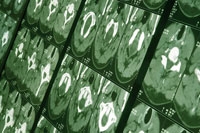
In computing, JPEG uses compression algorithms to reduce the size of images so they can be later restored without visual losses. Such compression techniques work by representing images with fewer numbers than the amount of pixels in the original image.
Marta Betcke, a computer science researcher at UCL, is leading an Engineering and Physical Sciences Research Council-sponsored project that will rely on a similar mathematical idea called ’compressive sampling’ for a range of imaging applications. ’Instead of the usual way of acquiring an image and then compressing it like with JPEG, we will acquire an image in the compressed format,’ she said.
The new technique could enable imaging modalities such as CT scanners to reconstruct images using fewer measurements of a patient, thus speeding up scanning time and reducing a patient’s exposure to radiation. The challenge will be to ensure that reducing these measurements does not compromise an image’s diagnostic value.
Betcke will collaborate with experts from industrial partner Rapiscan Systems, one of the leading manufacturers of full-body security imaging machines. Betcke previously worked with Rapiscan on the company’s volumetric CT imaging systems, which have undergone trials for airport baggage screening. These volumetric systems are capable of obtaining multiple slices of an object at once, which allows baggage to be quickly screened on belt speeds of 5m/s. This achievement, said Betcke, is mostly a result of the scanner’s novel multi-source geometry.
However, this geometry, she added, is a challenge to replicate with medical scanners. Therefore, her work will focus on modifying both the measurement procedure and the reconstructing algorithm of imaging modalities to increase the speed of image acquisition.
Some modifications that could speed up the scanning process, said Betcke, could range from changing the order that measurements are taken to incorporating prior knowledge, such as a patient’s previous scan, into the image reconstruction.
She will work with scientists at UCL on testing the new methodology on real-life applications. The first applications are likely to be used for security or quality assurance in a manufacturing setting, but medical imaging is an important field to consider, according to Betcke.
In this area, she will be focusing on a light-based CT scanning technique known as optical tomography. Betcke will be collaborating with Biomedical Optics Research Laboratory at UCL, which develops optical tomography systems.




Comment: Brute force can not solve autonomy challenge
My brother has lost his licence in his forties due to an eye problem and he'd quite like a self driving car.